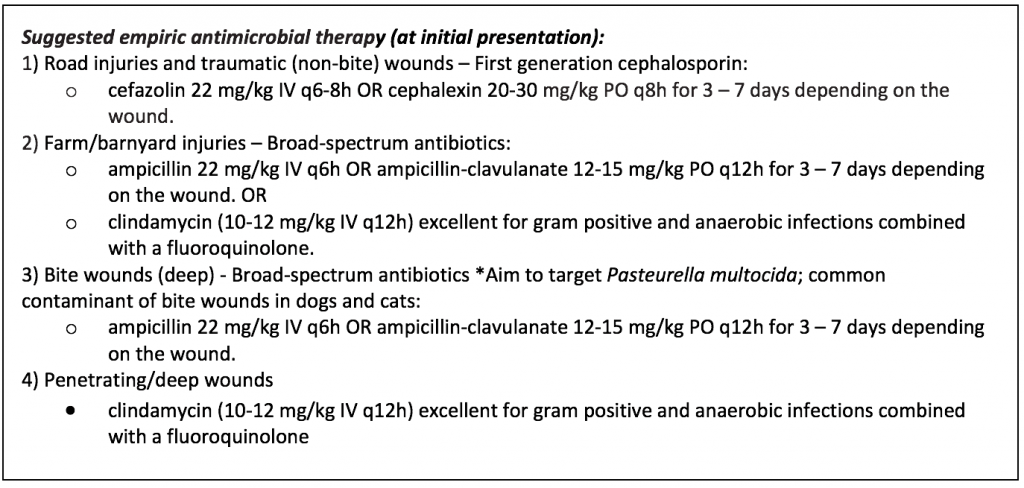Chapter 20: Table of Contents
Systemic antibiotics are not routinely used in all wound patients. However, in cases of traumatic (non-bite) wounds, systemic antibiotics are indicated for patients who appear systemically ill, have the potential to become systemically ill, or have extensive, deep, or severely contaminated wounds with marked tissue trauma within 1 hour of admission. Clean and superficial lacerations should be managed with local irrigation and no systemic antibiotics. Preferably, appropriate bandaging and topical preparations should be used to manage superficial contamination / infection instead of systemic antibiotics.

*Bite wounds, even if they appear minor, are always considered contaminated and warrant prompt intravenous administration of broad-spectrum antibiotics (ideally within one hour of injury) to prevent infection in severely injured patients. Broad-spectrum antimicrobial use is also recommended for wounds over tendon or bone, open fractures or where penetration of the chest, abdomen, central nervous system, or joints has occurred or is possible. Other indications for antibiotic therapy include patients who are prone to infections because of being immunosuppressed or due to co-morbidities.
Do not withhold antibiotics in order to obtain bacterial culture swabs. Bacterial culture and sensitivity can be performed before, and/or after wound cleansing (include debrided tissues). Cultures are always worth the financial investment if the wound is being closed primarily (deep thoracic or abdominal wounds) to ensure you can adjust antimicrobial therapy accordingly as soon as possible. For open wounds, bacterial culture and sensitivity is more indicated after a few days of open wound management when contamination by fecal bacteria or resistant environmental bacteria is more likely or if a wound does not appear to respond appropriately to therapy. I usually culture a wound at the time of closure to ensure that antibiotic can be adjusted accordingly. When collecting bacterial swabs, aim for deep swab or tissue samples from within the wound for relevant bacterial culture rather than superficial culture of the wound and/or exudate. Bacterial culture and sensitivity are not typically indicated in wounds that are responding well to local wound therapy and/or empirical antibiotic treatment if they are treated open and expected to heal by second intention.


